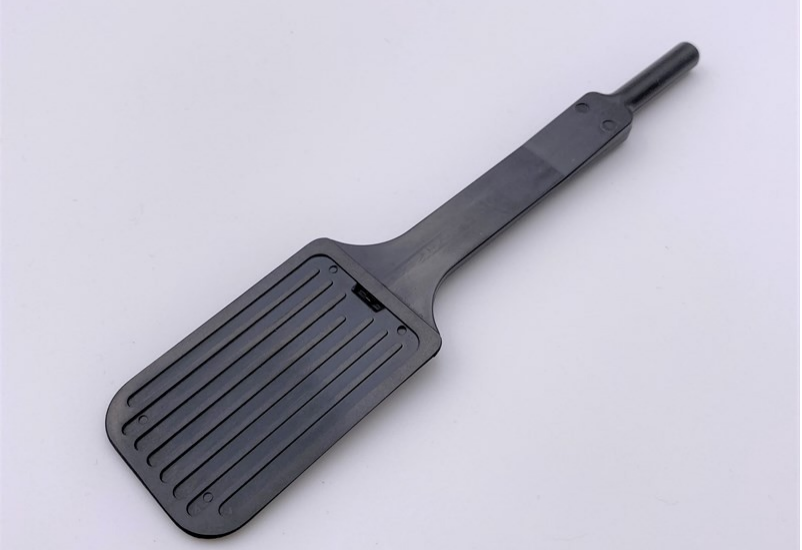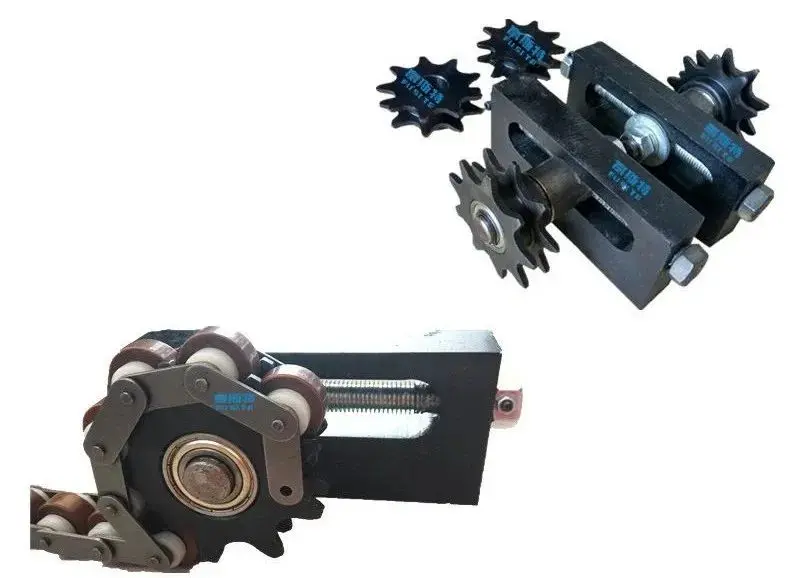With the increasing requirements for materials in the military, aerospace, medical, and civil fields, the replacement of new materials has become a trend. Carbon fiber is strong and light, but also has the “soft” of textile fibers, known as “black gold” and “the king of new materials.” Polyether ether ketone is a representative of high-performance special engineering plastics, and it is the “hexagonal warrior” standing at the top of the plastic pyramid. The composite of these two materials can be said to be a combination of strengths and is favored by many industries.
What is carbon fiber?
Carbon fiber is composed of organic fibers such as flake graphite microcrystals or low molecular weight hydrocarbons cracked and carbonized to form carbon backbone structure under high temperature environment, and the carbon content is higher than 90% inorganic high performance fiber (CF). Typically, carbon fibers are about 10 micrometers in diameter, and you need seven to eight of them lined up to match the thickness of a human hair. Its tensile strength can reach 4,800 mpa, which is seven to nine times stronger than steel, but only a quarter of the density of steel. Carbon fiber and has low density, high strength, high temperature resistance, corrosion resistance, radiation resistance and other excellent properties, but carbon fiber is generally not used alone, but more as a reinforcement material added to resin, metal, ceramics, concrete and other materials, constitute composite materials.

Carbon fiber is divided into aerospace grade and industrial grade according to different product specifications, also known as small tow and large tow. Carbon fibers above 48K are usually called large tow carbon fibers, including 360K and 480K. The aerospace class was mainly 3K at the beginning, and gradually developed into 12K and 24K, mainly used in national defense and high-tech, as well as sports and leisure products, such as aircraft, missiles, rockets, satellites, fishing rods, clubs and rackets. Industrial grade carbon fiber is used in different civil industries, including: textile, medicine and health, mechanical and electrical, civil construction, transportation and energy.

Carbon fiber reinforced PEEK, where is the strength?
Carbon fiber reinforced PEEK composite material refers to carbon fiber reinforced PEEK resin based composite material in the form of short carbon fiber (SCF), long carbon fiber (LCF) and continuous carbon fiber (CCF) or fabric. Pure PEEK itself is a special engineering plastic, with radiation resistance, self-lubrication, high temperature resistance, wear resistance, fatigue resistance and other characteristics. The performance of carbon fiber reinforced PEEK material has improved in many aspects compared with pure PEEK material.
Physical properties: At room temperature, the tensile strength of 30% short carbon fiber reinforced polyether ether ketone composite is at least double than that of unreinforced, and it reaches three times at 150 ℃, while the tensile strength of polypropylene acrylic continuous carbon fiber reinforced polyether ether ketone material with strip single prepreg is twenty times that of unreinforced polyether ether ketone material at room temperature. At the same time, the impact strength, bending strength and modulus of the reinforced composite are also greatly improved, the elongation is sharply reduced, and the thermal deformation temperature can exceed 300℃. The impact energy absorption rate of the composite directly affects the performance of the composite when it is subjected to impact. The carbon fiber reinforced polyether ether ketone PEEK composite shows a specific energy absorption capacity of up to 180kJ/kg.
The reinforcement of carbon fiber can resist the thermal softening of PEEK to a certain extent, and form a very high strength transfer film to effectively protect the contact area, so the wear rate of carbon fiber reinforced polyether ether ketone PEEK composite material is significantly lower than that of pure PEEK. Carbon fiber reinforced polyether ether ketone PEEK composite material is used for parts production, can effectively avoid metal or ceramic materials easy to produce surface cracks and other problems, its excellent tribological properties even exceed ultra-high molar mass polyethylene.
Biological properties: Because the implant material has been in the complex physiological environment of the human body for a long time, the joint erosion of external forces and body fluids has put forward higher requirements for the corrosion resistance, mechanical properties and wear resistance of the implant material. After research, the bending strength of PEEK material modified by carbon fiber can reach nearly 300MPa, about 3 times that of human bone, and the elastic modulus is equivalent to that of human bone. At the same time, PEEK itself has good plasticity and its mechanical properties are close to that of human bone. When used as an artificial bone, the external load can be evenly transmitted to bone. Therefore, the carbon fiber modified PEEK material can be used to prepare artificial bones or as a scaffold material for the repair of some human organs.
In vitro and in vivo experiments by domestic and foreign scholars have proved that carbon fiber reinforced polyether ether ketone composites not only have no cytotoxicity, but also can promote the protein synthesis and osteogenesis of bone cells, and show good ability to promote bone cell proliferation and adhesion when used as artificial joint prostheses.
Carbon fiber reinforced PEEK application field
The main application areas of carbon fiber reinforced polyether ether ketone PEEK include the following four aspects:
- Electronic appliance field
PEEK can still maintain good electrical insulation in harsh environments such as high temperature, high pressure and high humidity, and has characteristics such as not easy to deform in a wide temperature range, so it is used as an ideal electrical insulation material in the field of electronic and electrical appliances.

For example, according to the characteristics of carbon fiber reinforcement to prevent the chip from electrostatic discharge, the United States H-Square company uses it to make vacuum suction cup, to ensure that the parts in the silicon wafer vacuum handling system will not cause pollution and instantaneous discharge and damage the chip.
- Aerospace field
Due to the advantages of polyether ether ketone PEEK with low density and good processability, it is easy to directly process into high-demand parts, and carbon fiber reinforced polyether ether ketone composite material further enhances the overall performance of polyether ether ketone, so it is more and more used in aircraft manufacturing.
For example, the fairing used in the Boeing 757-200 series aircraft is made of carbon fiber reinforced polyether ether ketone PEEK. In addition, Gereedschappen Fabrick in Amsterdam, the Netherlands, used 30% carbon fiber reinforced polyether-ether-ketone PEEK composite to make larger components and demonstrated that its mechanical properties can be applied to aircraft balancing devices.

- Automotive
The energy consumption of the vehicle is closely related to the weight of the vehicle, and the lightweight of the vehicle can not only reduce fuel consumption and exhaust emissions, but also improve the power and safety, which is an effective way to save energy. In addition to the lightweight design of the structure, the use of lightweight materials is a more direct method. With its advantages of low density, good performance and convenient process, carbon fiber reinforced polyether ether ketone PEEK composite has been more and more frequently used in the automotive industry, and has shown great potential to replace steel with plastic.
For example, Robert Bosch GmbH used carbon fiber reinforced polyether ether ketone PEEK instead of metal as a feature of ABS. The lighter composite part reduces the moment of inertia, which minimizes the reaction time, greatly enhances the reaction performance of the overall system, and reduces the cost compared to previously used metal parts.

- Medical field
CF/PEEK is used in medical and healthcare applications due to its biocompatibility, high strength, and transmittability of rays. Carbon fiber reinforced polyether ether ketone is the ideal material for orthopedic external fixation device, sight device and other medical instruments. At the same time, carbon fiber reinforced polyether ether ketone has a wide range of applications in spinal surgery, joint replacement, trauma implants, sports medicine and other fields.
For example, CF/PEEK composites are used in the manufacture of orthopedic implants, spinal fusion devices, intervertebral fusion devices, and bone fixation plates. CF/PEEK’s high strength, stiffness, and fatigue resistance make it suitable for load-bearing applications, and the material’s radiographic permeability allows for clear imaging of surrounding tissue, facilitating postoperative monitoring.

